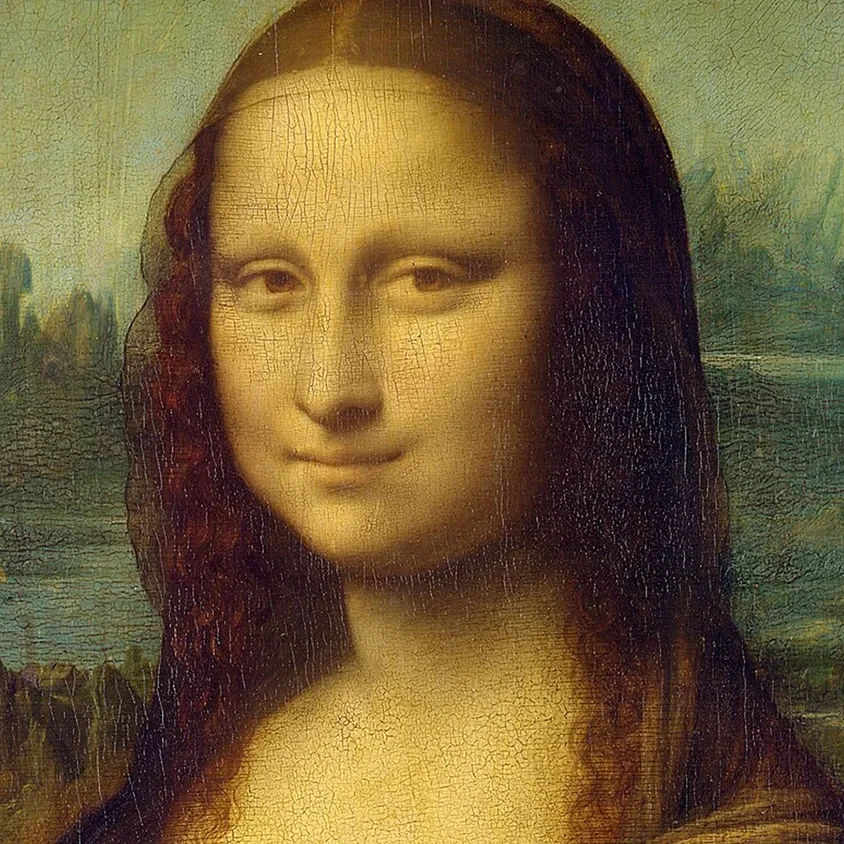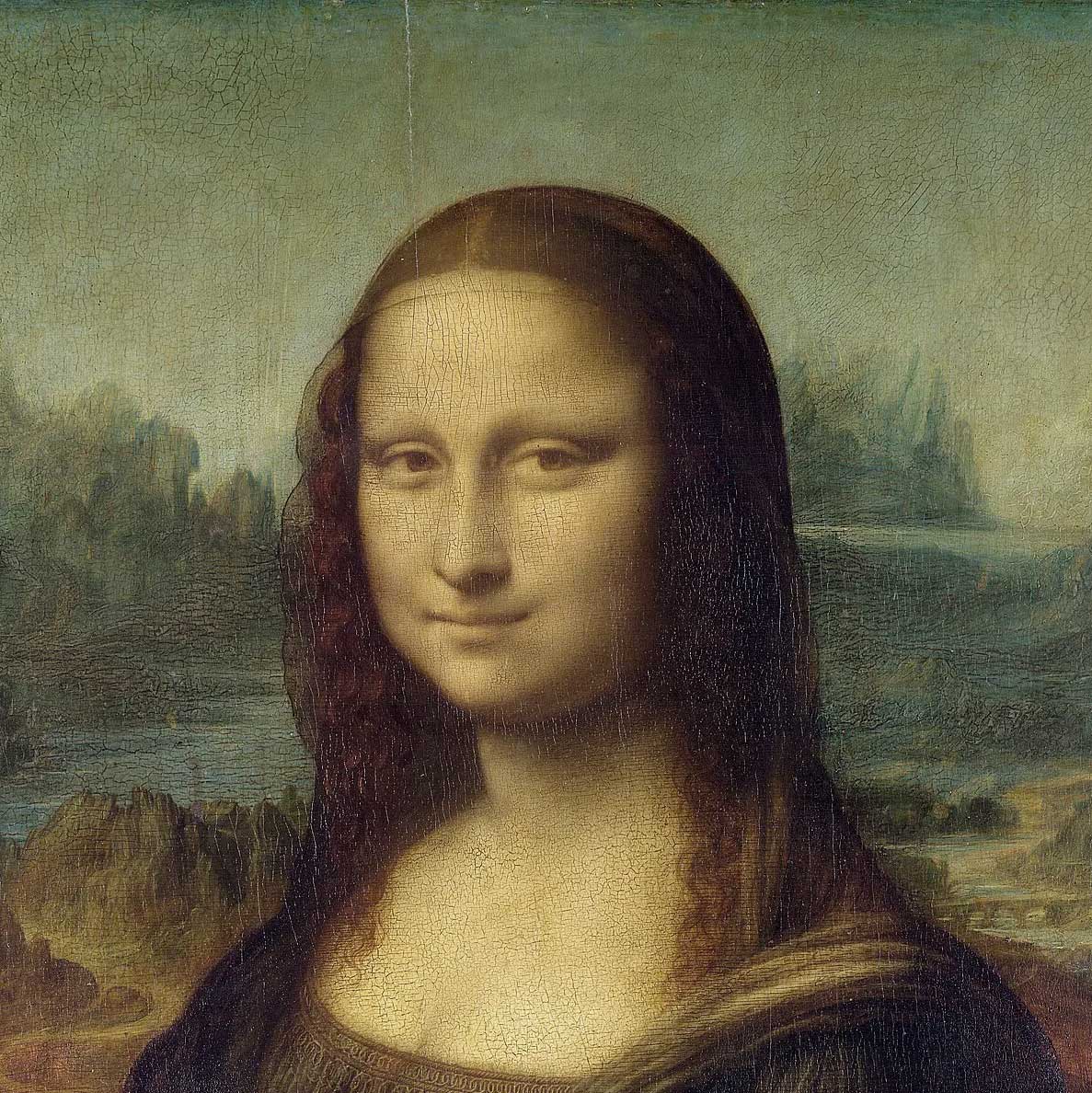Introduction: Unveiling the Mysterious Smile of the Mona Lisa
The Mona Lisa, one of the most renowned masterpieces painted by Leonardo da Vinci, continues to captivate audiences with its enigmatic smile. Leonardo da Vinci, an artistic genius of the Renaissance era, made significant contributions to the art world through his innovative techniques and unparalleled skill. The allure of the Mona Lisa lies not only in its artistic excellence but also in the intrigue surrounding the interpretation of the subject’s mysterious smile.
The Mona Lisa’s enigmatic smile has fascinated art enthusiasts and scholars for centuries. The painting’s timeless appeal and the questions it raises about the sitter’s emotions have made it a subject of endless speculation and analysis. In this article, we will delve into the background of the Mona Lisa, explore Leonardo da Vinci’s techniques and style, discuss the interpretations of the enigmatic smile, and examine the scientific analysis that has been conducted on the painting. By uncovering the mysteries behind the Mona Lisa’s smile, we hope to gain a deeper understanding of this iconic artwork and the genius of Leonardo da Vinci.
The Mona Lisa’s enigmatic smile is a subject of great intrigue. Despite the passage of centuries, it continues to captivate the imaginations of art enthusiasts and scholars alike. The smile is subtle yet enigmatic, leaving observers with a sense of mystery and wonder. Countless interpretations have been proposed over the years, each attempting to decipher the emotions behind the Mona Lisa’s elusive expression. To truly understand the secrets of the Mona Lisa’s smile, we must explore the historical context of the painting, Leonardo da Vinci’s techniques and style, and the scientific analysis that has shed light on this enigmatic masterpiece.
Background of the Mona Lisa Painting
Painted between 1503 and 1506, the Mona Lisa holds a significant place in art history. It is believed to depict Lisa Gherardini, the wife of Francesco del Giocondo, a Florentine merchant. The painting stands out for its lifelike portrayal and the use of the sfumato technique, which gives it a soft and ethereal quality.Sfumato involves the delicate blending of colors and the blurring of boundaries, creating a subtle smoky effect that adds depth and realism to the artwork. Art historians are interested in how da Vinci achieved the painting’s soft, misty look known as “sfumato”.
The historical context of the Mona Lisa adds depth to our understanding of this iconic painting. Leonardo da Vinci created the masterpiece during the High Renaissance period, a time of great artistic and intellectual flourishing in Europe. The painting reflects the cultural and social norms of the era, providing a glimpse into the fashion, hairstyles, and status symbols of the Renaissance elite. Moreover, the choice of Lisa Gherardini as the subject highlights the importance of family and social connections in Renaissance society. By exploring the historical background of the Mona Lisa, we gain a richer appreciation of the painting’s significance and the world in which it was created.
Leonardo da Vinci’s Techniques and Style
Leonardo da Vinci’s artistic brilliance is evident in the techniques and style he employed in the creation of the Mona Lisa. One of his most notable techniques was sfumato, which he used to perfection in this painting. Through meticulous attention to detail, da Vinci captured the minutest facial expressions with precision, infusing the artwork with a sense of life and depth. The absence of visible brush strokes or fingerprints adds to the enigma surrounding da Vinci’s process.
The sfumato technique employed by Leonardo da Vinci in the Mona Lisa is a testament to his mastery of light and shadow. By subtly blending colors and blurring the boundaries between them, da Vinci created a sense of depth and atmosphere that is unparalleled. The sfumato technique lends the painting its soft and ethereal quality, giving the impression that the subject is emerging from a hazy dream. Da Vinci’s meticulous attention to detail is evident in the delicate rendering of Lisa Gherardini’s features, from the slight creases around her eyes to the gentle curve of her lips. The absence of visible brush strokes or fingerprints further adds to the mystique surrounding da Vinci’s technique, leaving art historians and researchers curious about the methods behind his artistic genius.
Interpretations of the Enigmatic Smile
The enigmatic smile of the Mona Lisa has puzzled art enthusiasts and scholars for centuries. Various interpretations have been proposed, suggesting that the smile represents joy, melancholy, and mystery simultaneously.Recently, artificial intelligence (AI) technology has been used to decode the smile. The analysis revealed that the subject of the painting is 83% happy, challenging previous interpretations. This objective analysis provides new insights into the emotions conveyed by the Mona Lisa’s smile.
The interpretation of the Mona Lisa’s smile has been a subject of much debate and speculation. Some have argued that the smile reflects the sitter’s inner thoughts or a hidden message from the artist himself. Others see it as a reflection of the societal expectations and norms of the Renaissance period. The recent decoding of the smile using AI technology offers a scientific approach to understanding the emotions behind the enigmatic expression. By analyzing facial features and expressions, researchers have gained new insights into the emotional state of the subject. The objective analysis challenges traditional interpretations and provides a more nuanced understanding of the emotions conveyed by the Mona Lisa’s smile. While the exact meaning may remain elusive, this scientific approach brings us closer to unraveling the secrets of one of the world’s most famous paintings.
Theories and Speculations about the Subject
While it is widely believed that Lisa Gherardini is the primary subject of the Mona Lisa, alternative theories about the sitter’s identity persist. Some speculate that the painting may represent a composite of different individuals or even a self-portrait of Leonardo da Vinci himself. The subject’s identity continues to fuel the intrigue surrounding this iconic artwork.
The subject of the Mona Lisa has been the subject of much speculation and debate. Historical records suggest that the painting depicts Lisa Gherardini, the wife of Francesco del Giocondo. However, alternative theories propose that the sitter may be a composite of different people or even a representation of the artist himself. These theories add layers of complexity and intrigue to the painting, leaving room for further exploration and speculation. The subject’s identity, whether Lisa Gherardini or someone else, remains an enduring mystery that continues to fascinate art historians and enthusiasts.
Historical Significance and Cultural Impact
The Mona Lisa holds immense historical significance and has left an enduring cultural impact. It is considered a symbol of Renaissance art and remains an iconic masterpiece. The painting’s influence extends to subsequent generations of artists who have been inspired by its composition, technique, and enigmatic qualities. Today, the Mona Lisa is instantly recognizable and continues to be celebrated as a testament to human creativity and artistic innovation.
The Mona Lisa’s historical significance cannot be overstated. It represents a pinnacle of Renaissance art and showcases the remarkable talent and vision of Leonardo da Vinci. The painting’s enduring popularity and cultural impact have made it an integral part of popular culture. From being featured in countless films, books, and advertisements to inspiring artists across various mediums, the Mona Lisa continues to captivate and inspire audiences worldwide. Its status as an iconic masterpiece is a testament to its timeless appeal and the genius of Leonardo da Vinci.
Scientific Analysis of the Mona Lisa
Scientists have conducted extensive scientific analysis on the Mona Lisa to uncover its secrets. This includes the creation of a 3D digital model of the painting, which aids in its preservation and study. X-ray scans have also been used to examine the painting, revealing insights into its condition and shedding light on the artist’s techniques. These scientific investigations provide valuable information about the materials used and the artistic processes employed by da Vinci.
Scientific analysis has played a crucial role in understanding the Mona Lisa and its creator. Through the use of advanced imaging techniques, researchers have been able to delve into the painting’s layers and uncover hidden details. X-ray scans have revealed Leonardo da Vinci’s meticulous underdrawing and the modifications he made during the painting process. This scientific analysis not only provides valuable insights into da Vinci’s techniques but also helps in the preservation and restoration of the artwork, ensuring its longevity for future generations to appreciate.
The scientific analysis of the Mona Lisa has revealed fascinating details about the painting’s creation and condition. The use of X-ray scans has allowed researchers to examine the layers beneath the surface, uncovering Leonardo da Vinci’s artistic process. The scans have revealed the intricate underdrawing and the subtle changes made by the artist throughout the painting’s creation. Additionally, the creation of a 3D digital model has provided researchers with a new perspective on the artwork, allowing for a more in-depth study of its composition and structure. These scientific advancements contribute to our understanding of the Mona Lisa and shed light on the artistic techniques employed by Leonardo da Vinci.
Decoding the Enigmatic Smile
Recent advancements in AI technology have allowed scientists to decode the enigmatic smile of the Mona Lisa with greater accuracy. The analysis revealed that the subject of the painting is predominantly happy, contrary to previous interpretations. The objective analysis challenges long-standing assumptions and provides a deeper understanding of the emotions expressed through the Mona Lisa’s smile.
The decoding of the Mona Lisa’s smile using AI technology marks a significant breakthrough in our understanding of this enigmatic masterpiece. By analyzing facial expressions and emotions, researchers have gained new insights into the emotional state of the subject. The objective analysis challenges previous subjective interpretations and provides a more nuanced understanding of the sitter’s emotional state. While the smile remains enigmatic, this scientific approach offers a valuable contribution to the ongoing discourse surrounding the Mona Lisa.
The recent decoding of the Mona Lisa’s smile using AI technology offers a fresh perspective on one of the painting’s most intriguing elements. Through the analysis of facial expressions, researchers have gained new insights into the emotions conveyed by the subject’s smile. Contrary to previous interpretations, the objective analysis reveals that the subject of the Mona Lisa is predominantly happy. This finding challenges long-standing assumptions and demonstrates the power of technology in uncovering hidden meanings in art. The decoding of the smile adds another layer of complexity to the enigma surrounding the Mona Lisa, inviting further exploration and interpretation.
Mysteries of Leonardo da Vinci’s Techniques
Despite the scientific analysis conducted on the Mona Lisa, mysteries surrounding Leonardo da Vinci’s artistic techniques persist. Art historians remain curious about how da Vinci achieved the soft, misty effect known as “sfumato”. The absence of visible brush strokes or fingerprints in the scan adds to the intrigue surrounding da Vinci’s methods. Unraveling these mysteries continues to be a subject of fascination for researchers and art enthusiasts alike.
The artistic techniques employed by Leonardo da Vinci continue to baffle and inspire art historians. The soft, misty effect known as sfumato is one of da Vinci’s signature techniques, but the exact method of achieving this ethereal quality remains a mystery. Art historians and researchers have speculated on the use of glazes, blending techniques, and even the application of multiple layers to achieve the desired effect. The absence of visible brush strokes or fingerprints in the scan of the Mona Lisa adds to the enigma surrounding da Vinci’s methods, leaving researchers and art enthusiasts eager to uncover the secrets behind his artistic brilliance.
The Story of Theft and Recovery
The Mona Lisa has a fascinating story that goes beyond its artistic allure. In 1911, the painting was infamously stolen from the Louvre Museum, leading to worldwide intrigue and speculation. The theft elevated the painting’s fame and cultural significance, making it even more iconic. Eventually, the Mona Lisa was recovered, solidifying its place as an invaluable masterpiece and a testament to human creativity and perseverance.
The theft of the Mona Lisa in 1911 was a sensational event that captured the world’s attention. The painting’s disappearance from the Louvre Museum sparked a massive manhunt and garnered widespread media coverage. The theft not only elevated the Mona Lisa’s fame but also highlighted its cultural significance and the universal fascination it generates. The recovery of the painting two years later only added to its allure, solidifying its place as an invaluable masterpiece and a symbol of resilience and determination.
The theft and subsequent recovery of the Mona Lisa is a story that has captured the imagination of people worldwide. In 1911, the painting was stolen from its place in the Louvre Museum, leaving the art world in shock and disbelief. The theft sparked a global manhunt and generated widespread media attention. The painting’s absence only heightened its fame and cultural significance, as the world anxiously awaited its recovery. Two years later, the Mona Lisa was found and returned to its rightful place, cementing its status as an iconic masterpiece and a symbol of human ingenuity and perseverance. The story of the theft and recovery adds another layer to the Mona Lisa’s enduring legacy, further solidifying its place in art history.
Inspiring Artistic Exploration with Alex Righetto
The enigmatic smile of the Mona Lisa and its historical significance continue to inspire artists and art enthusiasts worldwide.
Artistic inspiration can be found in the most unexpected places, and the Mona Lisa is no exception. Its enigmatic smile, timeless beauty, and historical significance have inspired countless artists throughout the centuries. If you’re seeking to explore the spirit of the Mona Lisa and find inspiration for your own artistic journey, Alex Righetto’s website offers a treasure trove of captivating artworks.
Through the lens of contemporary artists, you can delve into the world of art and discover new perspectives that may ignite your creativity and passion. Whether you’re an aspiring artist or an art enthusiast, the spirit of the Mona Lisa awaits your exploration.




